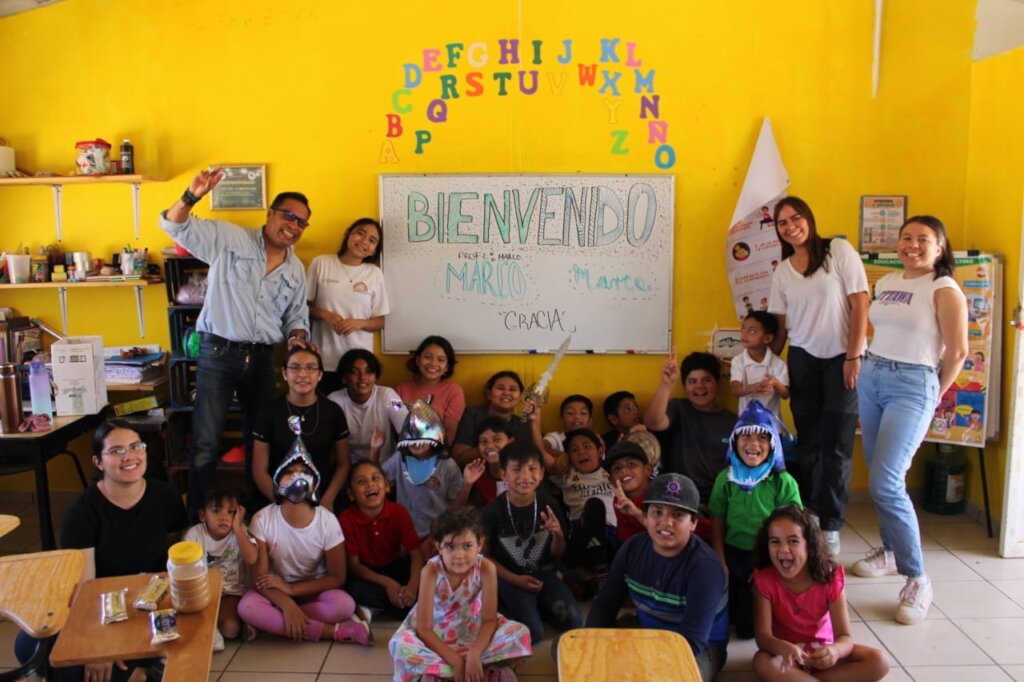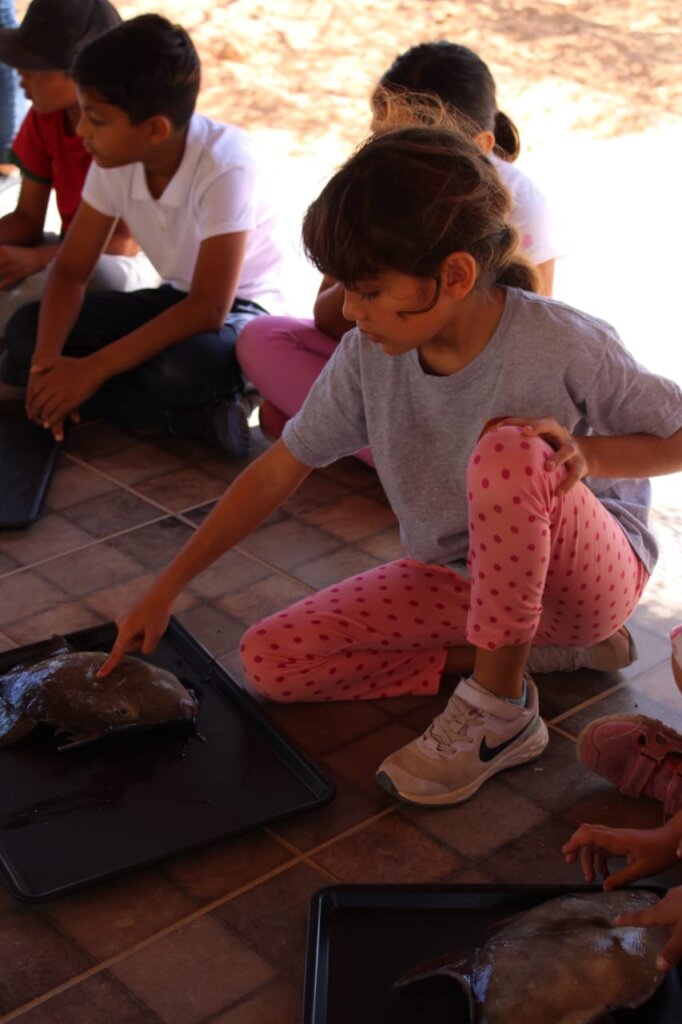By Norma Sanchez | Project Leader
This summer, the Visitors' Center welcomed Marco M., a professor from the Autonomous University of Baja California Sur, along with the children from the Environmental Day Care Center and the teachers from the Community School. They learned about one of the most abundant animals in Cabo Pulmo National Park: fish.
The children learned that fish are vertebrate animals that generally live in water. Their skeletons can be made of bone or cartilage, they have fins that allow them to move easily while swimming, and they mostly breathe through gills, obtaining oxygen from the water. Their bodies are covered with protective scales, and most fish lay eggs when they reproduce.
Fish can live in freshwater rivers, lakes, or lagoons, as well as in mangroves or estuaries where the water is a mixture of fresh and salt water, and, of course, in the sea. They feed on other fish, mollusks, or crustaceans and can be found at the surface or in great depths.
But what are they like inside? The children examined fish specimens to learn about their internal organs and their functions. They discovered that fish float thanks to their swim bladder, that they don’t have ears like humans but have an inner ear called an otolith, and that some fish have lungs in addition to gills, which allows them to move onto mud near rivers. They learned many other fascinating facts about fish anatomy.
They also learned about the adaptations many fish have developed to live in deep waters, to feed on specific species, to hide when they feel threatened, or to attract females for reproduction.
Thanks to all the children who participated!
We continue to work with great enthusiasm and invite you to keep supporting our Center. Every day, children, youth, and visitors inspire us with their energy, their desire to learn, and their passion for the environment. Together, we continue to promote the knowledge and conservation of wonderful places like Cabo Pulmo.
Thank you for your continued support!
Links:
Project reports on GlobalGiving are posted directly to globalgiving.org by Project Leaders as they are completed, generally every 3-4 months. To protect the integrity of these documents, GlobalGiving does not alter them; therefore you may find some language or formatting issues.
If you donate to this project or have donated to this project, you can receive an email when this project posts a report. You can also subscribe for reports without donating.



